 Risers and flow lines
Risers and flow lines
Our solutions
IFPEN develops innovative solutions to meet the challenges associated with operations in deep water environments (< 3,000 m): equipment and specific software as well as turnkey studies and services. The activity is conducted within the framework of industrial partnerships.
In terms of equipment, IFPEN is developing a rapid connector (i-Clip) for drilling columns (risers) and improving flexible pipes, umbilicals, reeled rigid risers and multi-phase pumps. It also proposes an innovative sensor concept to prevent the risk of deposits in pipelines. The studies conducted are particularly aimed at preventing corrosion.
The software solutions developed are used for structural dimensioning calculations.
Rapid connectors for riser components adapted to deep sea environments: Clip Riser® technology
The Clip Riser® is an innovative solution for rapid bayonet connection between drilling riser components making it possible to reduce assembly time (10 seconds) and secure connections.
The solution has been successfully used since the 1980s and is currently available in several versions.
The latest addition to the range is the i-Clip Riser™ 2.0, developed via a partnership with NOV launched in 2019. Intended for use at depths of more than 4,000 meters, it needs to be able to withstand extreme forces (4,000 kips). The solution is set to be qualified in 2024. This will be carried out on the U529 high-capacity traction-bending test bench capable of applying traction stresses of 2,600 metric tons.
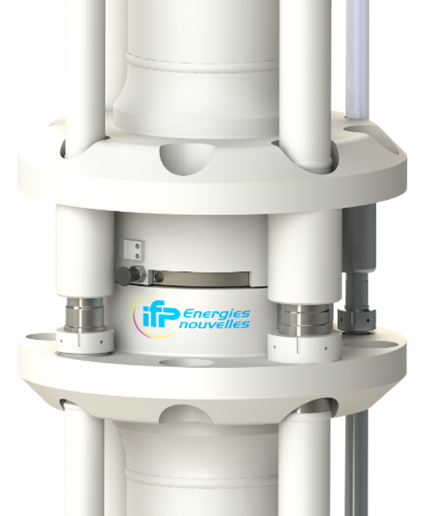 |
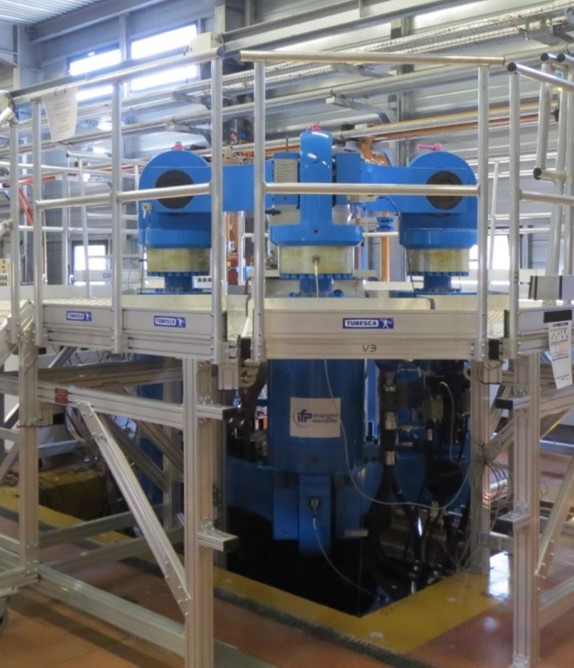 |
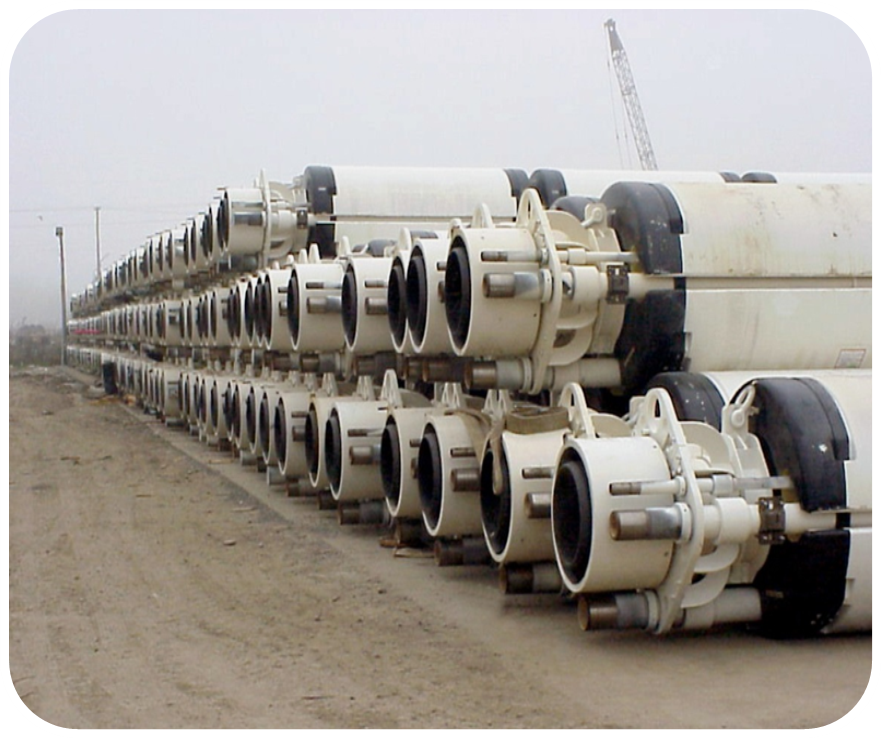 |
IFPEN joined forces with AFGlobal Corporation and Expert Riser Solutions to carry out inspection, maintenance and repair work on operational risers in Brazil and the USA respectively.
Work is underway at IFPEN to define inspection rules and optimize procedures using machine-learning algorithms that take into account real data rather than data provided by models.
IFPEN also signed a licensing agreement with AFGlobal concerning the supply of spare parts throughout the world, meeting the technical specifications of the original parts.
Flexible pipes, umbilicals and reeled rigid risers
IFPEN’s research in this field is conducted in close partnership with Technip FMC, the company that markets the equipment developed. IFPEN was the pioneer of flexible line technologies and continues to boast considerable expertise in their design and development.
New technologies, such as composite armors, anti-H2S sheaths and diffusion barriers, are helping to give flexible pipes additional advantages, particularly for deep-water applications and exposure to corrosion.
Experimental qualification activities conducted on all scales (through to full-scale flexible prototype) associated with the development of dedicated numerical models contribute to TechnipFMC’s commercial successes on the international market.
The dimensioning of umbilicals and flexible pipes: FEMUS™
Developed by IFPEN within the framework of the IFPEN-TechnipFMC collaboration, FEMUS™ software, interfaced with Abaqus® software, is dedicated to the automated construction of simulation models for umbilical systems. This tool makes it possible to develop new umbilical designs faster, by assessing their mechanical and thermal performances with a high level of precision.
CO2 and H2S barrier sheaths
In partnership with TechnipFMC, IFPEN is developing an innovative concept for a gas barrier sheath integrated into a flexible oil and gas transport pipe aimed at protecting the pipe from corrosion. This technology is based on the use of reeled, multi-layer polymer/metal bands and is employed in particular to protect flexible pipes from corrosive gases such as CO2 and hydrogen sulfide (H2S). For the latter gas, a polymer has been developed to prevent the H2S from reaching the structural metallic components of the flexible pipe throughout its lifespan, generally 20 years. Placed between the existing pressure sheath and the metallic components, the anti-H2S material has the ability to neutralize the H2S during its diffusion within the material. The sheath tolerates an H2S concentration in production fluids of 15,000 ppm, up to a temperature of 70°C. Another advantage associated with this polymer is the possibility of using thinner steel wires, making the flexible pipes lighter and cheaper.
Diffusion models
For each new technological development, dedicated models are developed to simulate experimental results and enable TechnipFMC to predict the technology’s performance in actual operating conditions. The main challenge lies in being able to predict the composition of the annular space of flexible pipes with a view to controlling corrosion and ensuring lifespans of up to 30 years.
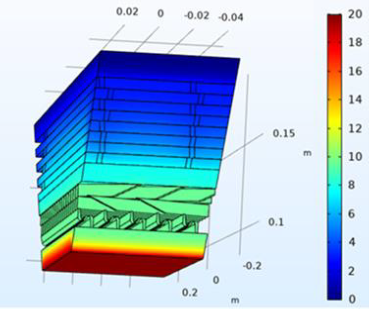
Hybrid flexible pipes
Within the context of the development of a new flexible pipe structure with a composite core (HFP- Hybrid flexible pipe), TechnipFMC draws on IFPEN’s expertise to establish the design rules for this new product.
Advanced R&D models for understanding the behavior (mechanical and diffusion) of this type of structure and specific dimensioning tools dedicated to the engineering of this product are being developed and optimized.
An experimental set-up is also being developed to characterize the transport properties of the inner cores of multi-layer composite flexible pipes (Thermoplastic Composite Pipe) as a replacement for the inner core of conventional flexible pipes.
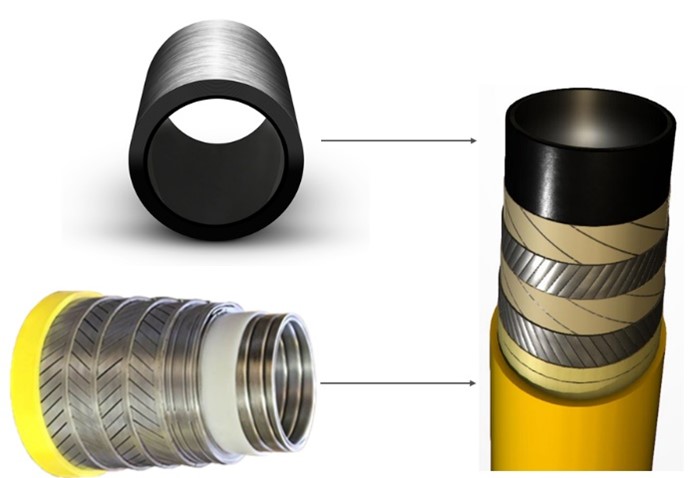
Damage risk assessment in polymer-type materials
To prevent the risk of damage or breakage of the polymer materials used in certain technological products developed by TechnipFMC during the design phase, a methodology has been developed at IFPEN. It is based on finite element method simulations using specific mechanical behavior models, and the application of a risk assessment criterion.
Depending on the problem considered, these models can be combined with diffusion and validated via experimentation using graduated cylinders in environments of varying degrees of harshness (HP/HT/gas).
The corrosion CHALLENGE
Corrosion presents numerous challenges for offshore facilities, particularly pipes. In order to gain a better understanding of the mechanisms involved and counter them, IFPEN has its own platform dedicated to the problem. It also has access to the CorRTEx pooled corrosion test loop installed at the Axel’One Innovative Processes Platform (Solaize). A partnership with the French Corrosion Institute (IC) has also been set up.
Steel corrosion is accelerated by the high H2S or CO2 concentration of the fluids being extracted. To prevent this risk, gas barrier sheaths developed by IFPEN and integrated into flexible pipes are particularly effective.
To study the effects of high pressures on steel fracture risks in the presence of H2S (transient effects), IFPEN launched the collaborative Fugacity project, which is currently in its second phase.
Multi-phase pumping: the Poseidon™ pump range
The Poseidon™ pump range, developed in partnership with OneSubsea, an offshore production SLB subsidiary, makes it possible to simultaneously transport liquid and gas effluents, covering a very broad range of gas concentrations (0 to 100%). The partnership with OneSubsea is continuing in order to improve the performance of these pumps.
This technology makes it possible to:
• increase the volumes produced and stabilize the production flow,
• bring back on stream wells at the end of their life.
Nearly 100 units have been commissioned at offshore facilities around the world.
Design software developed by IFPEN is used to dimension and predict the performance of these pumps. In order to optimize the performance and reliability of these pumps, IFPEN is working on new blade concepts and a detailed flow description using visualization tests and numerical tools.
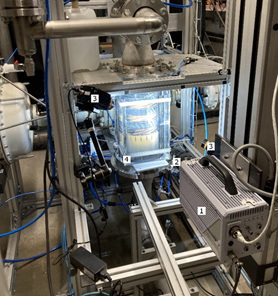
Flow assurance
IFPEN develops solutions and conducts tests in order to:
• understand and represent the physics of complex flows present in flow lines,
• prevent or remedy flow line blockages, which can be caused by hydrate formation, paraffin deposits, etc.
In particular, a sensor has been developed to monitor for the potential appearance of hydrates. Joint industry projects are also conducted to study themes of interest to industry.
ATOLI sensor: anticipating the risk of hydrate plug formation
The ATOLI sensor, developed by IFPEN’s teams, addresses three objectives:
- To optimize hydrate management and operating procedures in gas storage facilities and flow pipes where gas is present at high concentrations,
- To evaluate the quantity of water present in the gas responsible for hydrate formation in real temperature and pressure conditions at production sites,
- To determine whether the dew point of a dehydrated gas is below -5°C.
By better anticipating hydrate risks, the ATOLI sensor makes it possible to reduce the operating costs resulting from the injection of thermodynamic inhibitors aimed at ensuring continued production.
EasyWax JIP: paraffin deposit monitoring and modeling system
The EasyWax JIP (2019-2022) was set up to conduct numerous studies on paraffin deposits, using new tools for monitoring their formation in order to better understand the deposit process and qualify methodologies for the detection and monitoring of these deposits. The EasyWax JIP has entered a follow-up phase that began at the end of 2023.
Meg+AA JIP: efficient hydrate management in plants or on gas fields
The MEG+AA JIP was launched in 2023 with a view to optimizing hydrate management on gas fields or in refineries using the ATOLI sensor. It is based on the use of an adapted mixture of MEG (mono ethylene glycol) and anti-caking agents (AA) to reduce the carbon footprint of MEG loops, ensure the reliability of the anti-caking solutions for pipes with very low liquid retention and reduce the need for MEG injection, recovery and regeneration units.







